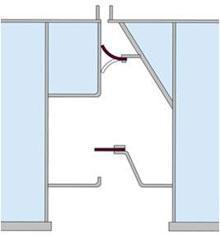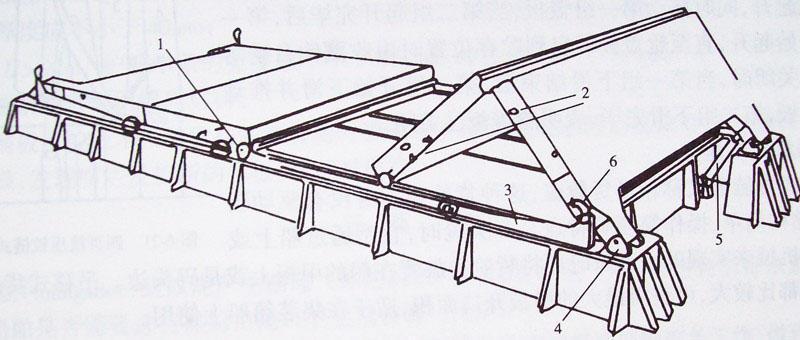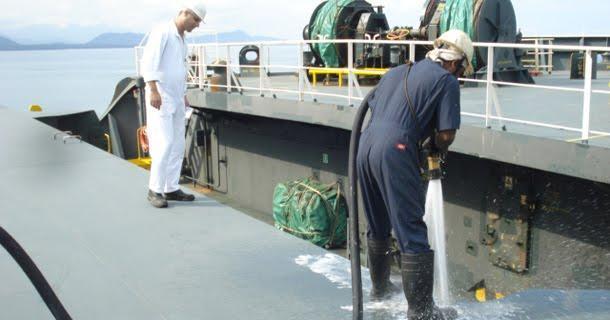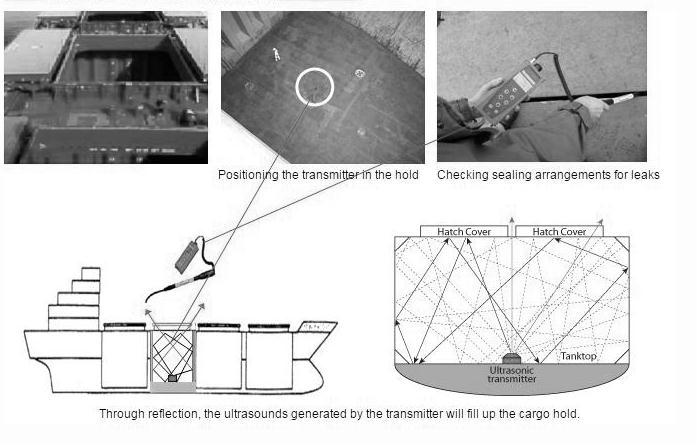Inspection of Vulnerable Areas in the Dry Cargo Holds for Damages:
When a vessel requires repairs to damaged equipment or to the hull it is necessary for the work to be carried out to the satisfaction of the classification society surveyors. In order that the ship maintains its class, approval of the repairs undertaken must be obtained from the surveyors either at the time of the repair or at the earliest opportunity.
Terminal operators should be aware of the damage that their cargo handling equipment can inflict on the ship’s structure. It is important that the protective coatings in cargo holds and water ballast tanks are maintained.
The cargo holds and deck areas should be inspected by the ship’s deck officers upon completion of cargo discharge to identify any signs of physical damage, corrosion or coating damage to the ship’s structure. Where hull damage is identified, which may affect the integrity of the hull structure and the seaworthiness of the ship, it should be reported accordingly to the classification society.
Cargo watch on deck should monitor stevedore grab handling and damage. Crane drivers should be advised to take care not to damage ship structure cargo watch on deck should monitor ballast operations cargo watch on deck when the ship is carrying water-sensitive cargoes should identify the potential for water to leak from a crack or damage in the hold plating following grab damage consider gravitating ballast, to reduce pressure on ballast tank structures a rigorous sounding regime should be maintained in port.
The internal hold structure and protective coatings in the cargo hold and the adjacent double bottom are vulnerable to damage when the cargo is discharged using grabs. The weight of empty grabs can be 35 tonnes. Other types of equipment employed to free and clear cargo, including hydraulic hammers fitted to extending arms of tractors and bulldozers can inflict further damage to the ship’s structure, especially in way of the side shell and the associated frames and end brackets. Chipping (sharp indentations) and the local buckling or detachment of side frames at their lower connection could lead to cracking of the side shell plating which would allow the ingress of water in to the cargo space.
The protective coatings which may be required to be applied in the cargo hold are also subject to deterioration caused by the corrosive nature of the cargo, high temperature cargoes, cargo settlement during the voyage and the abrasive action of the cargo. Where no protective coatings have been applied or the applied protective coatings have broken down, the rate of corrosion in that area will greatly increase, especially when carrying corrosive cargoes, such as coal.
Corrosion will weaken the ship’s structure and may, eventually, seriously affect the ship’s structural integrity. The severity of the corrosion attained by a structural member may not be easily detected without close- up inspection or until the corrosion causes serious structural problems such as the collapse or detachment of hold frames resulting in cracks propagating in the side shell.
Impact damage to the inner bottom plating or the hopper sloping plating will result in the breakdown of coatings in the adjacent water ballast tanks, thereby intensifying the rate of structural deterioration.
Solas 74 as amended Chapter XII: Additional safety measures for bulk carriers Regulation 5: (This regulation applies to bulk carriers constructed on or after 1 July 1999)
Bulk carriers of 150 m in length and upwards of single side skin construction, designed to carry solid bulk cargoes having a density of 1,000 kg/m3 and above, shall have sufficient strength to withstand flooding of any one cargo hold in all loading and ballast conditions, taking also into account dynamic effects resulting from the presence of water in the hold, and taking into account the recommendations adopted by the Organization.
Regulation 6: Structural and other requirements for bulk carriers (This regulation applies to bulk carriers constructed before 1 July 1999):-
- Bulk carriers of 150 m in length and upwards of single side skin construction, carrying solid bulk cargoes having a density of 1,780 kg/m3 and above, shall comply with the requirements of this regulation in accordance with the implementation schedule specified in regulation 3.
- The transverse watertight bulkhead between the two foremost cargo holds and the double bottom of the foremost cargo hold shall have sufficient strength to withstand flooding of the foremost cargo hold, taking also into account dynamic effects resulting from the presence of water in the hold, in compliance with the bulk carrier bulkhead and double bottom strength standards. For the purpose of this regulation, the bulk carrier bulkhead and double bottom strength standards shall be treated as mandatory.
- In considering the need for, and the extent of, strengthening of the transverse watertight bulkhead or double bottom to meet the requirements of paragraph 2, the following restrictions may be taken into account:
- Restrictions on the distribution of the total cargo weight between the cargo holds; and
- Restrictions on the maximum deadweight.
- For bulk carriers using either of, or both, the restrictions given in paragraphs 3.1 and 3.2 above for the purpose of fulfilling the requirements of paragraph 2, these restrictions shall be complied with whenever solid bulk cargoes having a density of 1,780 kg/m3 and above are carried.
Vulnerable Areas in Ship’s Cargo holds where infestation may take place:
- Tank top ceiling: If, as often happens, cracks appear between the ceiling boards, food material may be forced down into the underlying space and serve as a focus of infestation for an indefinite period. Insects bred in this space can readily move out to attack food cargoes and establish their progeny in them.
- ‘Tween-deck centre lines, wooden feeders and bins are often left in place for several voyages and because of their construction are a frequent source of infestation. After unloading a grain cargo, burlap and battens covering the narrow spaces between the planks should be removed and discarded before the holds are cleaned or washed down. These coverings should be replaced by new material in preparation for the next cargo.
- Transverse beams and longitudinal deck girders which support the decks and hatch openings may have an L-shaped angle-bar construction. Such girders provide ledges where grain may lodge when bulk cargoes are unloaded. The ledges are often in inaccessible places overlooked during cleaning operations.
- Insulated bulkheads near engine-rooms: When the hold side of an engine-room bulkhead is insulated with a wooden sheathing, the airspace and the cracks between the boards often become filled with grain and other material. Sometimes the airspace is filled with insulating material which may become heavily infested and serves as a place for insect breeding. Temporary wooden bulkheads also provide an ideal place for insect breeding, especially under moist conditions, such as when green lumber is used.
- Cargo battens: The crevices at the sparring cleats are ideal places for material to lodge and for insects to hide.
- Bilges: Insects in accumulations of food material are often found in these spaces.
- Electrical conduit casings: Sometimes the sheet-metal covering is damaged by general cargo and when bulk grain is loaded later, the casings may become completely filled. This residual grain has often been found to be heavily infested. Casings that are damaged should be repaired immediately or, where possible, they should be replaced with steel strapping, which can be cleaned more easily.
- Other places where material accumulates and where insects breed and hide include:
- The area underneath burlap, which is used to cover limber boards and sometimes to cover tank top ceilings.
- Boxing around pipes, especially if it is broken.
- Corners, where old cereal material is often found.
- Crevices at plate landings, frames and chocks.
- Wooden coverings of manholes or wells leading to double-bottom tanks or other places.
- Cracks in the wooden ceiling protecting the propeller shaft tunnel.
- Beneath rusty scale and old paint on the inside of hull plates.
- Shifting boards.
- Dunnage material, empty bags and used separation cloths.
- Inside lockers.
-
 2nd Mate (F.G.) & NCV (NWKO) – Volume 3 (Cargo)₹ 219.00
2nd Mate (F.G.) & NCV (NWKO) – Volume 3 (Cargo)₹ 219.00 -
 Cargo Consolidated Notes for Phase 1 Chief Mate₹ 361.00
Cargo Consolidated Notes for Phase 1 Chief Mate₹ 361.00 -
 Cargo Solved MMD Past Papers Phase 1 Chief MatePrice range: ₹ 244.00 through ₹ 576.00
Cargo Solved MMD Past Papers Phase 1 Chief MatePrice range: ₹ 244.00 through ₹ 576.00





